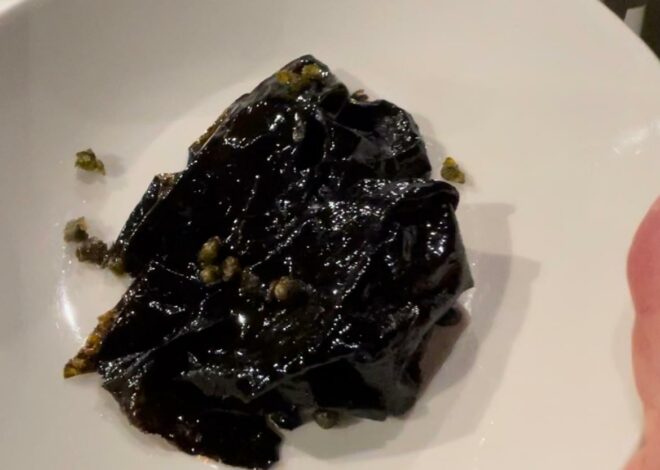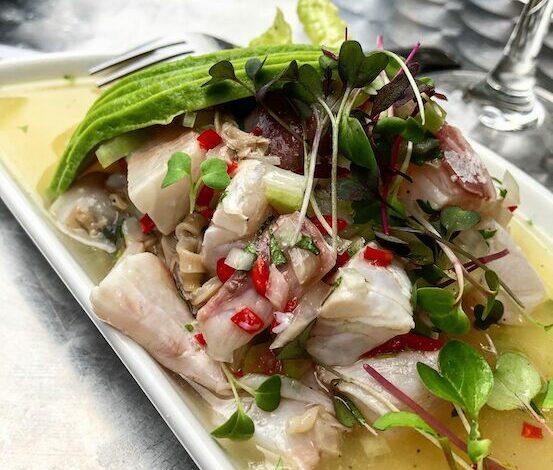
Raw and Rare: A Steak Tartare Expedition Across Continents
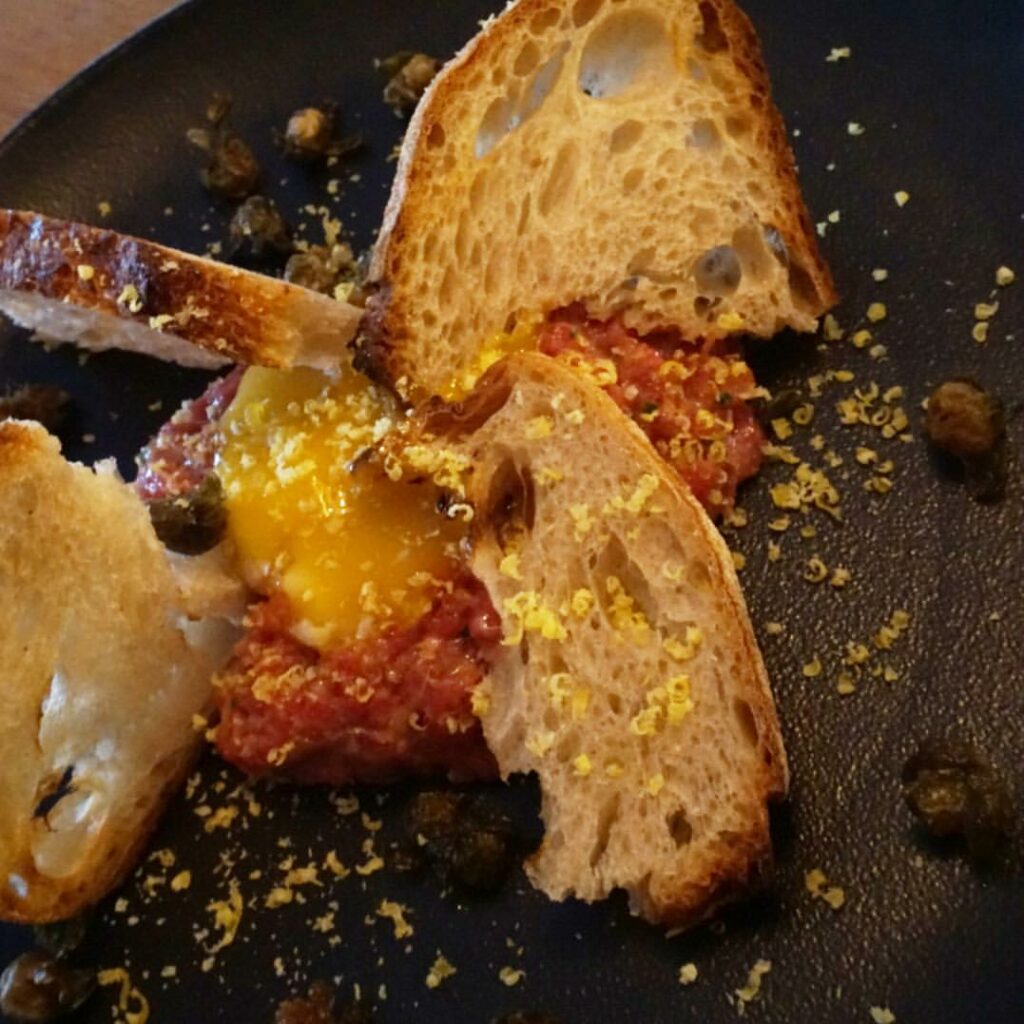
My earliest memories of tartare come from Venezuela, where my parents would take me to this restaurants where a waiter at the table served up this finely seasoned, slightly spicy raw meat mix. If there’s tartare on the menu, I’ll have it. It just makes sense to me. I don’t like the grotesque, ketchup-rich, soccer ball-sized portions you find in France and Belgium. The earliest version of steak tartare dates back to early 20th century France. They used to serve it up with tartar sauce, which is basically mayo jazzed up with capers, pickles, and parsley. Now, there’s this story floating around that the Tartars used to soften raw meat under their horse saddles to make minced meat. Sorry mates, it’s nothing but an old French fairy tale. Fake news.

In San Sebastian, my go-tos are Jess Lorigo at Geralds, serving up classic cuts, and Santi Salinas at LABe, making it with Txuleta and serving it out in a hot dog brioche bun with a yolk sauce.
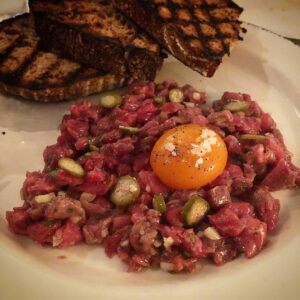

The ones I had at various spots in Copenhagen share a similar vibe—freshly ground meat bits coated in a well-seasoned, mustardy mayo, squeezed out of a thick-as-toothpaste tube, served with dark, hearty, pumpernickel-style bread.

I once had one in Madrid that got a splash of roasted pepper demi-glace, courtesy of Chef Pedro Gallego at his no-bullshit-cuisine joint: Casa Mortero. (video below)
Mauricio López, chef at Ancestral, La Paz, Bolivia, once served me up a llama tartare that undoubtedly ranks among my favorites. Lean meat with bold gamy flavors, homemade pickled almonds, wrapped in a tender butter lettuce leaf like a taco—brilliant.
I’m into experimental tartares. The base has to be meat, sure, but the possibilities are endless. I know one of Albert Adrià’s spots served up a vegetarian tartare made from dehydrated canned tomatoes. Why not? If it’s got umami and the right chew, it’ll work.
Then there’s the ‘sour veggies’. Classic picks are cornichons, capers, and onions, but really, any punchy pickle will do—green peppercorns, kimchi, anything with enough kick. There’s plenty of overlap with condiments too. Keep your fucking ketchup away of my tartare. I prefer spicy mustard mayo or a subtle splash of Japanese soy sauce. Acid is key—it shouldn’t overwhelm, though. It isn’t meat ceviche.
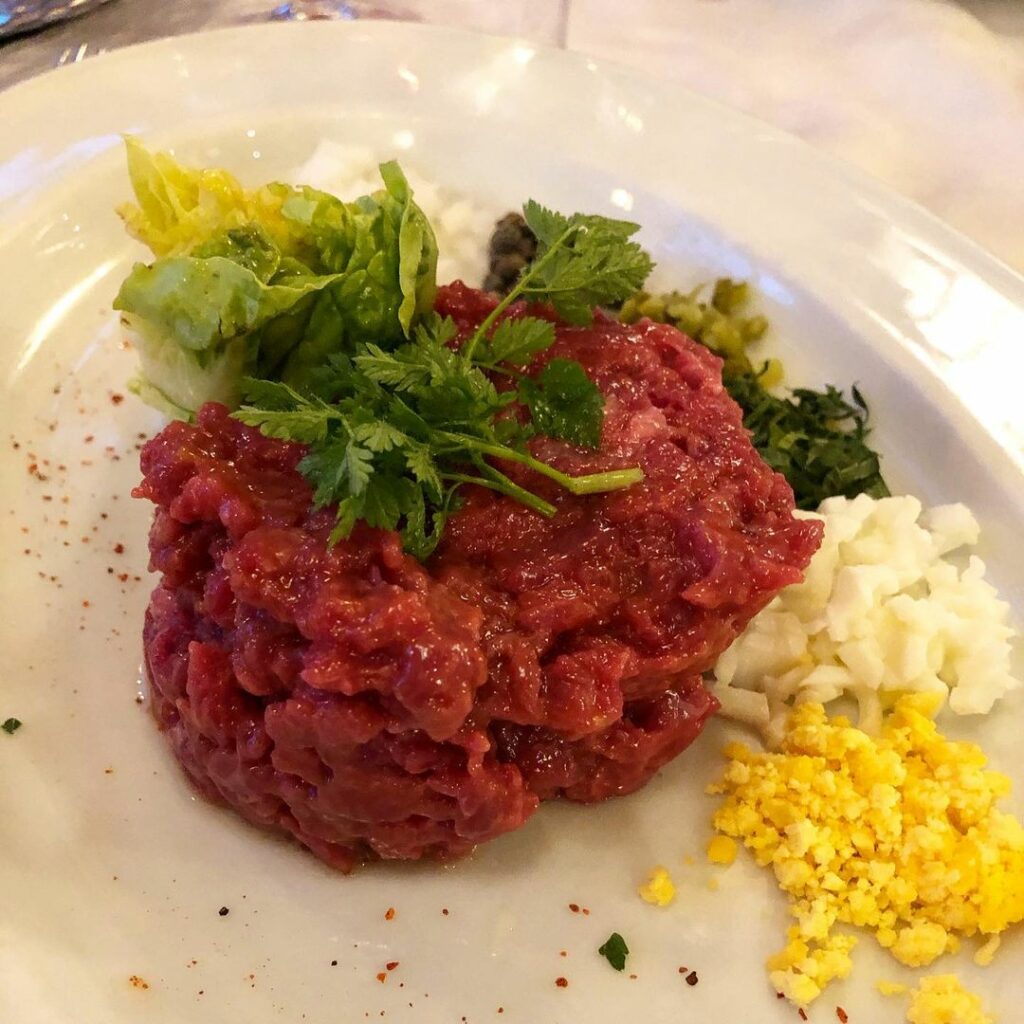
Then there’s the fishy element. Worcestershire sauce has anchovy notes, a good fish sauce, anchovy oil, or fish roe can do wonders here. My favorite option: finely chopped Cantabrian anchovy fillet.
Condiments and creaminess are essential to me. Creaminess is optional; a tartare can work without egg yolk or mayo, leaning more towards Korean or Japanese styles, but it can’t go without a good hit of condiments. Aromatic, artisanal spiciness, hints of mustard, fish, onion. I never quite understood the reasoning behind adding hard-boiled eggs to a tartar.
Dive into the infinite universe of bread and its possible incarnations—croutons, sticks, slices, white, black, strong, soft. No rules, really, except that there should be a cohesive coherence among the tartare elements.

I recently had the best tartare of my life at Copenhagen’s Marv and Ben’s: venison tartare with a generous amount of lumpfish roe, pickled mushrooms, and pine, all topped with a thin, crisp toast, egg yolk and sprouts. While it might be considered eccentric, it sticks to a fairly classic element structure, like so:
| A common Variation | Marv and Ben’s | |
| Meat | Beef | Venison |
| Sour veggies | Cornichons, onions, cappers | Pickled mushrooms, sprouts |
| Condiment | Mustard, Tabasco, Pepper | Pine |
| Fish Aromas | Worcestersire | Lumpfish roe |
| Creaminess | Egg Yolk, mustard | Egg Yolk |
| Bread | Bread | Fine toast |
Beyond being delicious, the plate’s elements tell a cohesive Nordic story, evoking perhaps a forest. This framework could be used to craft a tartare under any concept—as long as the product is good, the flavors mesh well and conceptually fit the context, the dish will be a hit.

